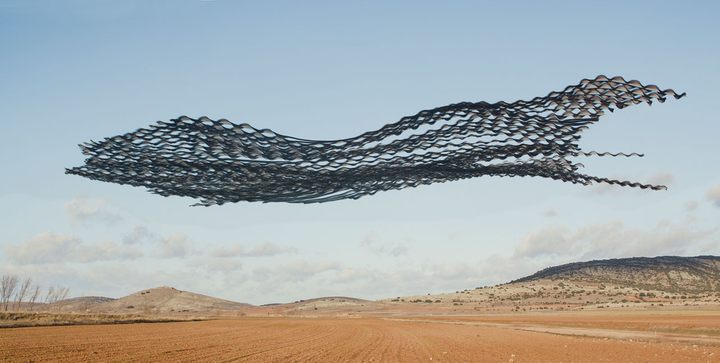
How One Photographer Captures the Glory of Birds in Flight
An otherworldly look at a familiar sight.
Dark, sinuous lines float in a blue sky. It seems straight out of sci-fi or fantasy—a fantastical spacecraft transitioning into its cloaking shield, or a mythical beast in flight. In reality, it is cranes at Gallocanta Lake in Spain, dozens of them, traveling between where they feed in the fields and where they sleep in the water. It is many frames, compressed to a single moment. Catalan photographer Xavi Bou is fascinated with birds and the challenge of making their flight patterns visible. He has combined his passions for nature, art, and technology to create these images which he calls “ornitography,” from the Greek ornitho- (“bird”) and graphe (“drawing”).
The photographer learned to appreciate nature from childhood walks with his grandfather in the town Prat del Llobregat, where Bou grew up. It is located in the Llobregat Delta, one of the most important wetland zones in the region around Barcelona, and a key spot along bird migration routes. “He made me look at how to differentiate them [the birds],” Bou writes, about his grandfather, in an email, “how they were not the same throughout the year.”
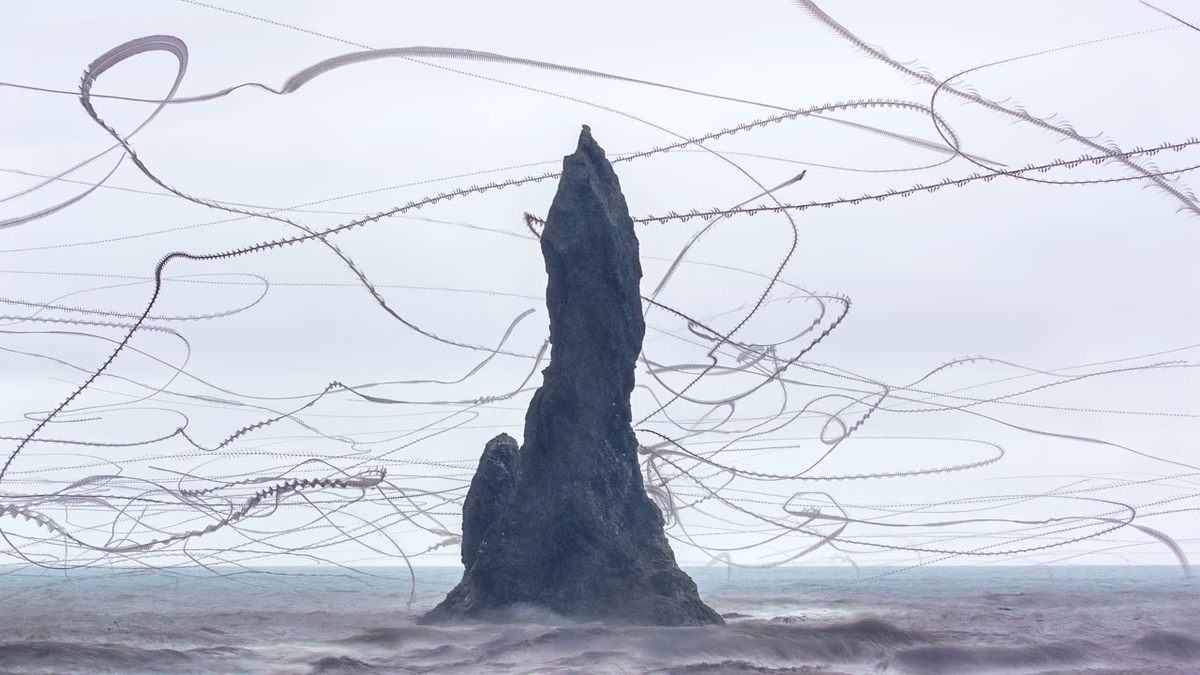
As an adult, “One day I wondered what types of trails the birds would leave in the sky if that were possible,” he says. “That is when I imagined those lines that would appear in the sky. I thought it might be interesting to make them visible.” He made his first test images in 2012, and the project has changed his life so much that he stopped his professional work as a postproduction artist and has dedicated himself exclusively to his ornitography work for the last five years.
Creating these images is a slow process. He might spend a couple of days at a site recording video footage. Then it can take a week to 10 days to process the images in low resolution, and then another week to create a high-resolution final image. “To be able to show a period of time in a single image and not do it through a long exposure,” he says, “what I discovered is that I had to take many images per second and merge them into one. I shoot between 30 and 120 frames per second, so I use high-resolution movie cameras and shoot most of the time in slow motion … Then I merge the sequence into a single image.”
Initially, Bou focused on the flight of a single bird , against the background of a colorful landscape. Over time he’s been drawn to groups of birds against the flat backdrop of the sky. “It is a more abstract result,” he says, “but for me, it is much more powerful…. It goes beyond the simple ‘beauty.’” In some cases they can resemble Asian calligraphy (Ornitography #123) or frantic knots of scribbles (Ornitography #169).

A particular favorite subject of Bou’s is starling flocks, because of their unpredictable flight patterns. One image (Ornitography #130) shows beautifully soft and amorphic abstract shapes—but depicts a life-and-death drama of hunter with prey. According to Bou, the voids in the middle of the image were produced by hawks attacking the flock. “I am passionate about the idea of how a sculptor, the hawk, shapes the shapes of starling clouds,” he says.
Atlas Obscura has a selection of Xavi Bou’s images, which are on view at the University of Rennes in France until January 15, 2020.
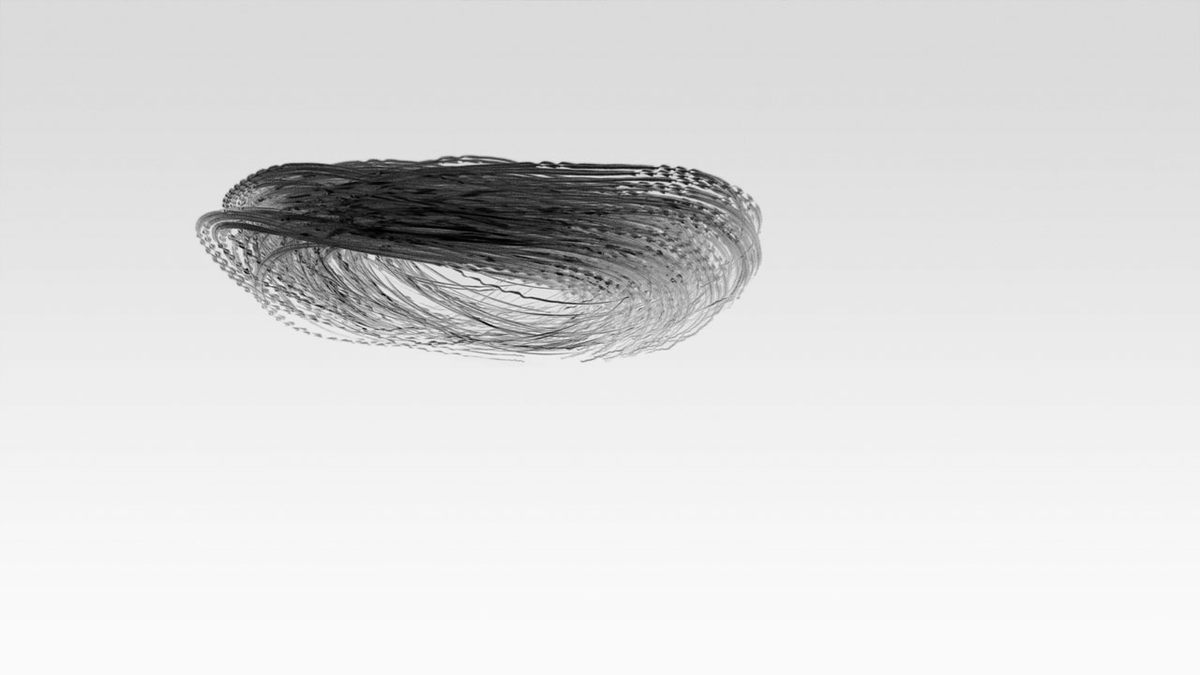
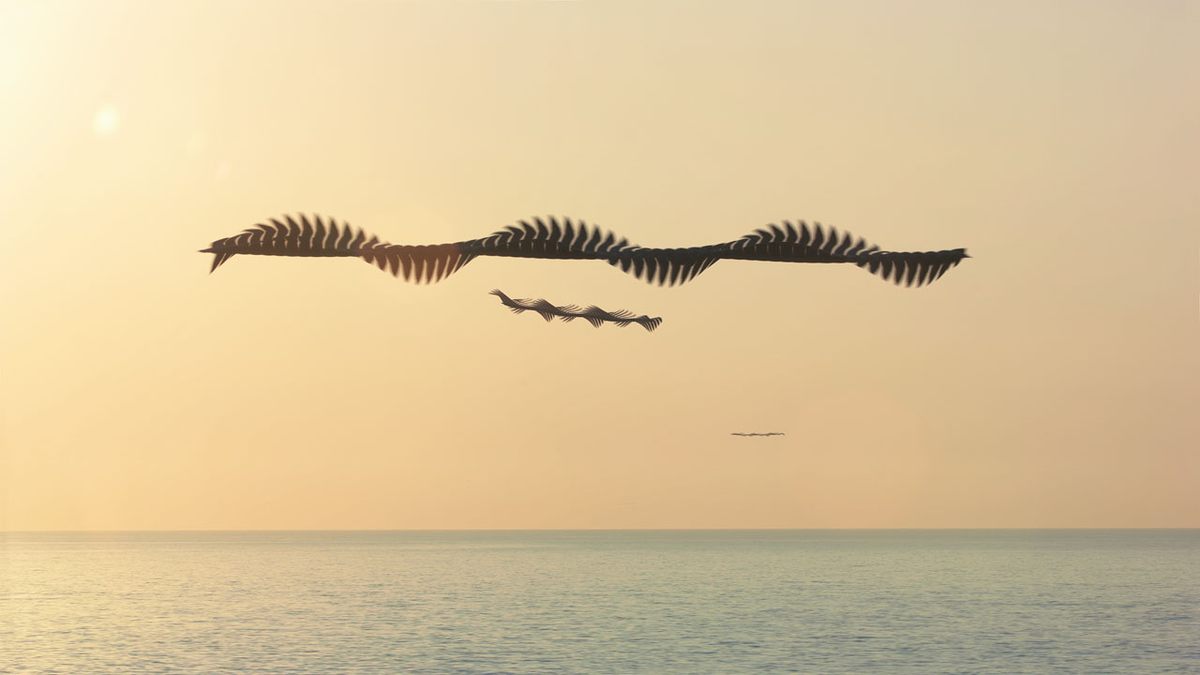
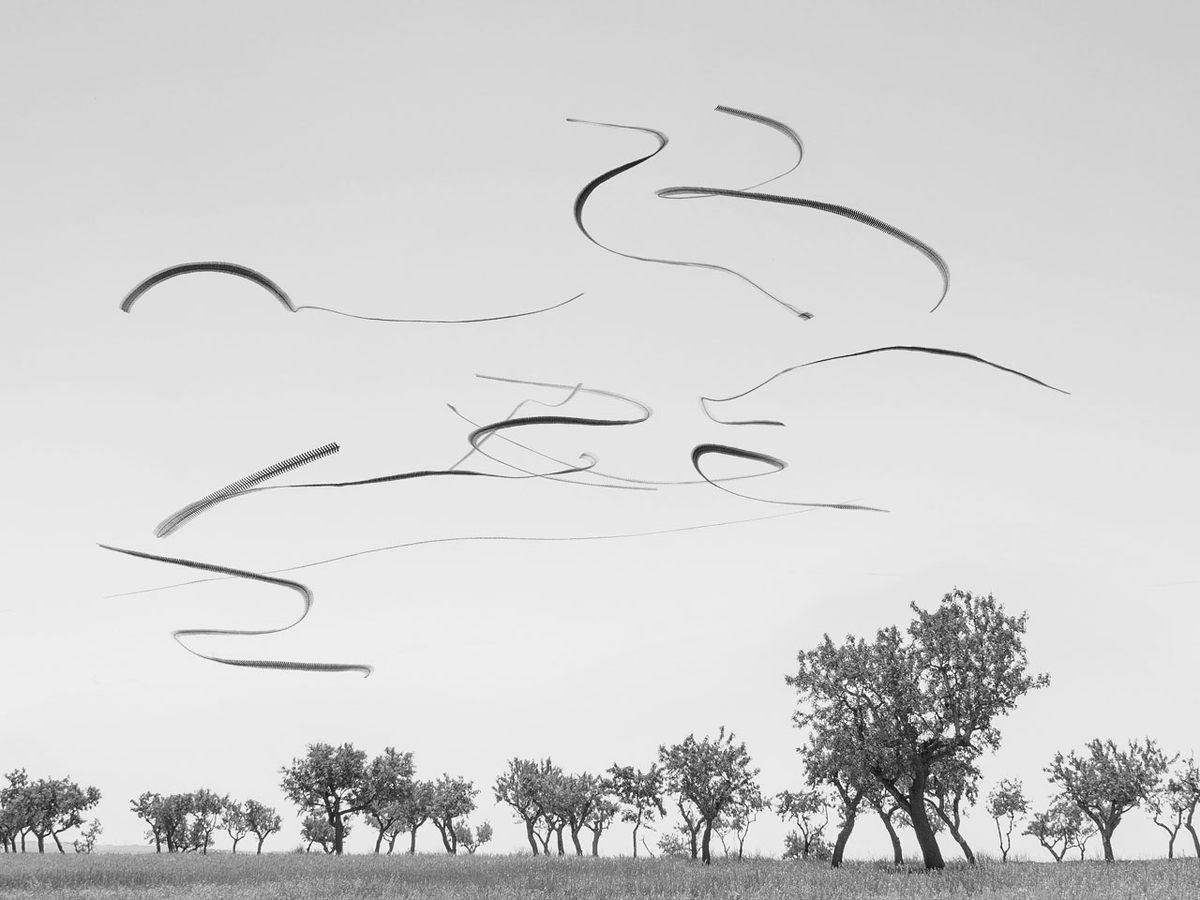
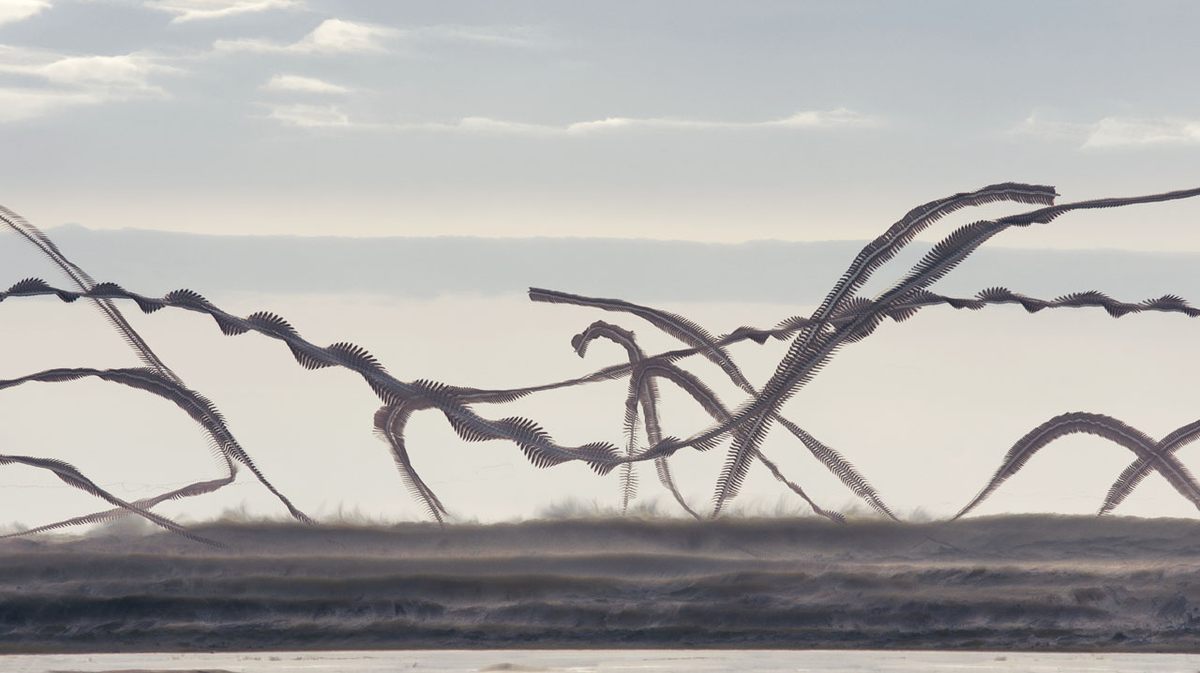
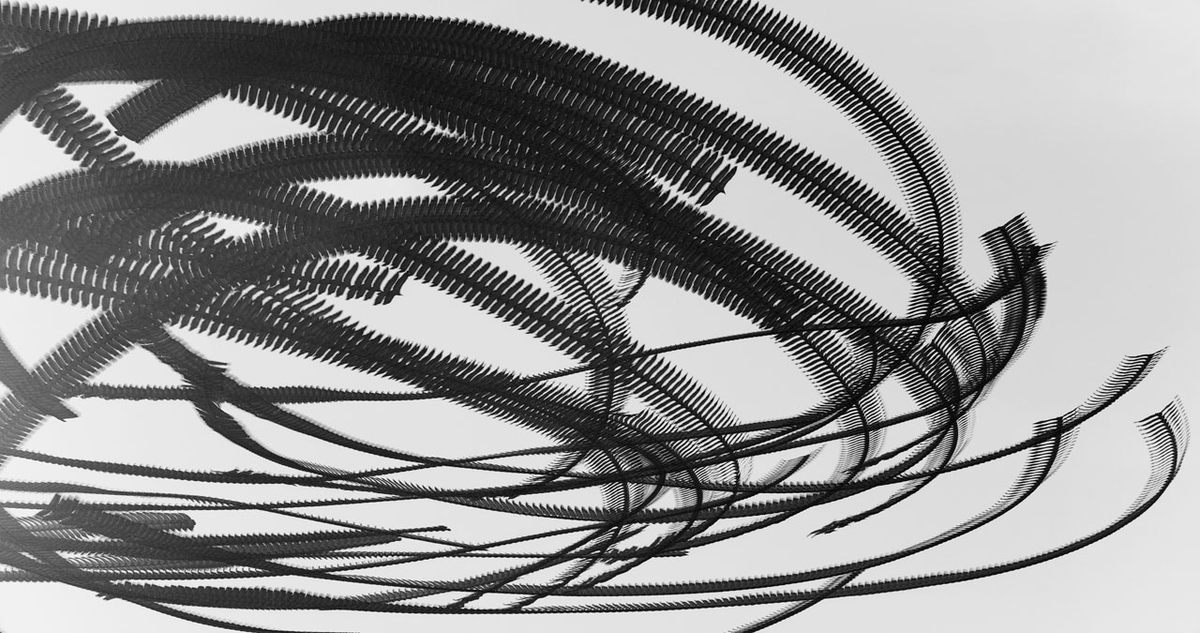
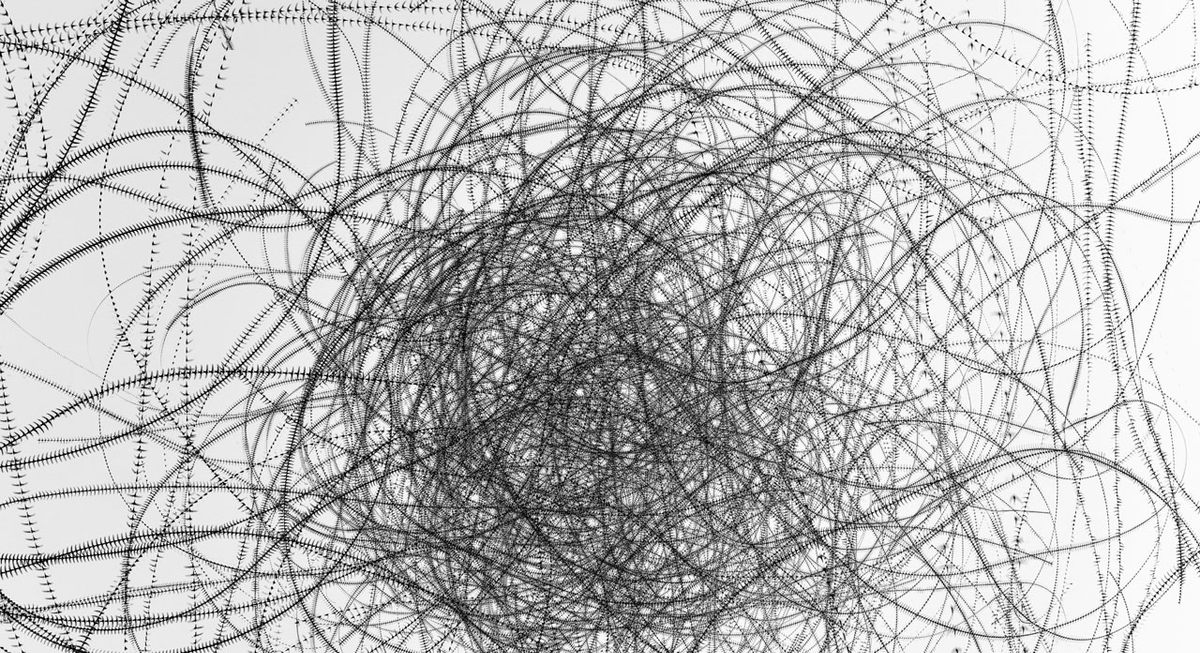
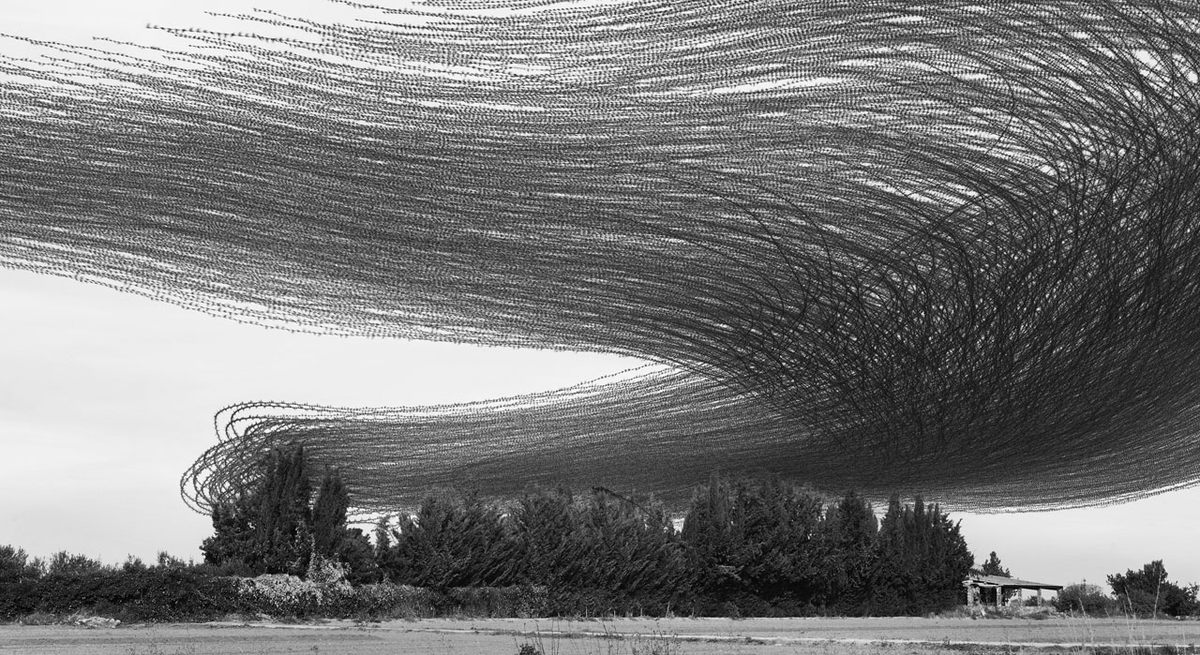



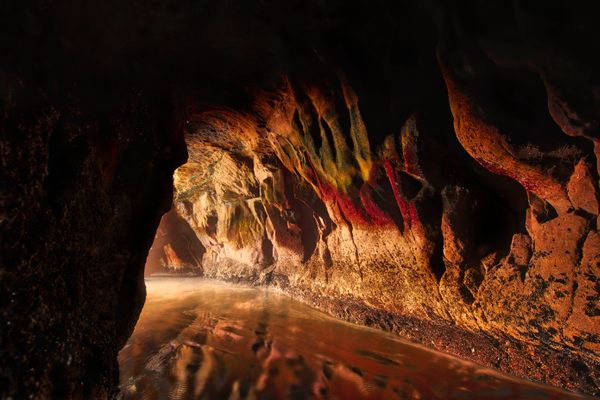



























Follow us on Twitter to get the latest on the world's hidden wonders.
Like us on Facebook to get the latest on the world's hidden wonders.
Follow us on Twitter Like us on Facebook